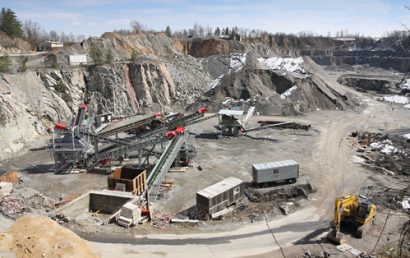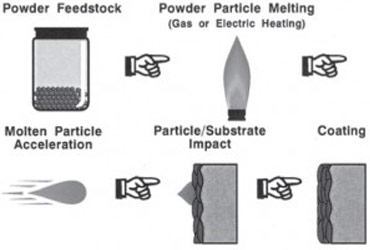How Do Thermal Spray Coatings Protect Metal-Seated Valves?
Metal to metal contact. Just the thought of it makes the hair stand up on the back of your neck thinking about the wear and tear on the parts that must be involved. But thanks to today’s thermal spray coatings, the metal to metal contact needed for metal seated valves to properly seal can be made less troublesome.
To protect actuators and valves against corrosion and wear, a variety of coatings are utilized. When talking about previously mentioned sealing surfaces involving metal to metal, to guard against galling over the sealing surfaces, specially designed coatings are needed. Additionally, however, these coatings can also protect against abrasive, erosive, and corrosive wear caused by products that flow through certain tubes, chambers, etc.
Thermal Spray Protective Coatings
In order to deposit protective coatings, a variety of coating technologies are used. To deposit materials such as electroless nickel or hard chrome, plating is used. A high-temperature diffusion process known as boronizing is another technology. Here, to form hard metal borides for protection, boron atoms diffuse into a surface. Today, we will take a look at thermal spray technologies that use the processes of spray and fuse and HVOF.
Technology Using Thermal Spray and Fuse
To deposit an as-sprayed coating, a thermal spray process is used in the process of spray and fuse. This coating, in order to achieve a metallurgical bond to the component being coated, is heat treated. To deposit the as-sprayed coating, flame spraying is usually used. But thermal processes like HVOF can also be used. By heating this coating to a temperature within the liquidous and solidus range of the coating, it is fused. Various methods of heat treating exist: furnace, induction, and torch heating. Because of the fusing process, significant changes take place in the coating microstructure. A strong metallurgical bond between the component and the coating occurs through diffusion at the substrate/coating interface. This bond means that, without the coating chipping, it can withstand impact. At the splat boundaries between individual particles, diffusion also occurs within the coating. Because of this, splat boundaries are eliminated. Additionally, an improvement occurs to the coating’s corrosion resistance properties.
HVOF or High-Velocity Oxyfuel Process And Coatings
High volumes of combustible liquids or gases are fed into a combustion chamber in the HVOF process. Combustion temperatures close to 6000°F and velocities exceeding Mach 5 are created by the coupling of the high-temperature combustion and the high-volume of liquid or gas flow. A metal ceramic composite known as cermet, or ceramic, or metal powder is injected into a device. The material is melted from the heat of the combustion fuel. The powder is accelerated by the high velocity of the gas jet. Excellent as-sprayed adhesion is exhibited by the resulting high-density coatings and provided by the kinetic energy and powder together.
A variety of valve types and their performance can be greatly improved through the use of thermal spray coatings. This means that a treated valve will show substantial life expectancy improvement. Coating technologies can similarly be used to better the performance of plug, ball, and gate valve components used in applications that are highly challenging.
Could the valves used by your business benefit from protective coatings applied through today’s high-tech thermal spray methods? Contact the experts at A&A Coatings today. We can meet all your thermal spray coating needs.



